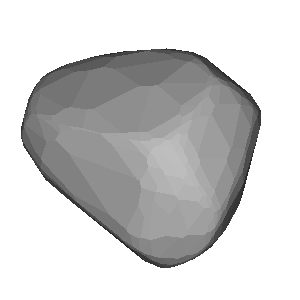2022-09-30 / 4UC 492-022219 / (1021) Flammario
| # | OBS | Observer | Occ | Meth. | Instr. | CC | TSRC | UT1 | UT2 | UT3 | UT4 | UT2E | UT3E | Dur. | Chrd |
|---|---|---|---|---|---|---|---|---|---|---|---|---|---|---|---|
| 1 | show | Peter Tickner | O+ | CCD | M356 | UK | GPS+ | 03:45:13 | 03:46:30.12 | 03:46:34.56 | 03:47:47 | 0.13 | 0.19 | 4.44 | 75.5 |
| 2 | show | Eberhard Bredner | O+ | VID | M254 | DE | GPS++ | 03:40:00 | 03:47:01.73 | 03:47:08.77 | 03:50:00 | 0.33 | 0.33 | 7.04 | 119.7 |
| 3 | show | Henk De Groot | O+ | VID | M356 | NL | GPS++ | 03:44:03 | 03:46:54.21 | 03:47:01.4 | 03:49:31 | 0.16 | 0.5 | 7.19 | 122.2 |
| 4 | show | Jan-Maarten Winkel | O+ | VID | M356 | NL | GPS++ | 03:46:01 | 03:46:56.0 | 03:47:02.7 | 03:48:01 | 0.3 | 0.3 | 6.70 | 113.9 |
| 5 | show | Tim Haymes | O+ | CCD | M280 | UK | GPS++ | 03:45:10 | 03:46:28.4 | 03:46:35.0 | 03:48:10 | 1.1 | 1.1 | 6.60 | 112.2 |
5 observations found in db: euraster
Available (probably) matching predictions (click on the link to switch):| JPL#71 : 19b49815-8654-4a18-a6a0-99489d76845a [db: observed] |
Using prediction 19b49815-8654-4a18-a6a0-99489d76845a for map and profile fit
| Ellipse and circular profile fits to the timings (chords) |
|---|
|
|
Auto-Fit Result: Size = 127 x 57 km a',b' = 63.5, 28.6 km X0,Y0 = -277.2, 8.7 km Mean diameter = 85 km From 5 chords (VID,CCD) You can enter space separated chord numbers (example: 11 4 8) or a method like VIS to ignore all visual timings, or a time source like RAD and NTP (but not GPS). If the plot disappears, then there are less than 2 chords left (too much ignored, go back with browser). Check SiMDA for size and mass data. Check Johnston Archive for satellites. |
Sky projection (artificial light) for occ. time: 2022-09-30, 03:46 UT (JD = 2459852.657)
| DAMIT | Q | P (h) | λ, β | JD0 | JD-JD0 | φ0 | Version | Modified | Vol-equiv D | Cmnt |
|---|---|---|---|---|---|---|---|---|---|---|
| # 861 | None | 12.152 | 216°, 55° | 2.448182e6 | 11670.7 | 0.0° | None | None | not scaled | 2016-01-04 |
| # 862 | None | 12.152 | 32°, 22° | 2.448182e6 | 11670.7 | 0.0° | None | None | not scaled | 2016-01-04 |


Image size: 300px. Transparent image background for copy & paste
| Map with groundtrack and observer stations |
|---|
| Event Details |
|---|
Occultation UUID [and DB] : 19b49815-8654-4a18-a6a0-99489d76845a [observed] Occultation Date + Time : 2022-09-30 at 03:48:44 UT +/- 0.01 min [1] Object Designation : (1021) Flammario Orbit Class : MBA Star Designation : GDR3 3325344898122690176 Star Coordinates (ICRF) : RA = 06 16 49.1177, DE = +08 19 44.160 [2] Star Magnitudes : G = 14.02 mag, RP = 13.22 mag, BP = 14.69 mag Object Magnitude : V = 13.0 mag Estimated Magnitude Drop : 0.4 mag Estimated Max. Duration : 5.9 sec Object Mean Diameter : 99 km (src: astorb) Speed of the shadow : 17.0 km/s Elongation to Moon & Sun : 142° (sunlit = 20%), Sun = 93° Cross-track uncertainty : 3.3 mas = 4 km = 0.04 path-width (1-sig) RUWE and duplicate source : 0.99 mas, dup.src = 0 (0:false, 1:true) Ephemeris Reference : JPL#71 [1] time t0 of closest geocentric approach c/a, [2] including proper motion until t0 |
| More Data and Informations |
|---|
(If error 404: link not valid which means no data available)
| Aladin Sky Atlas |
|---|
| Aladin Lite direct link (has Gaia overlay) |